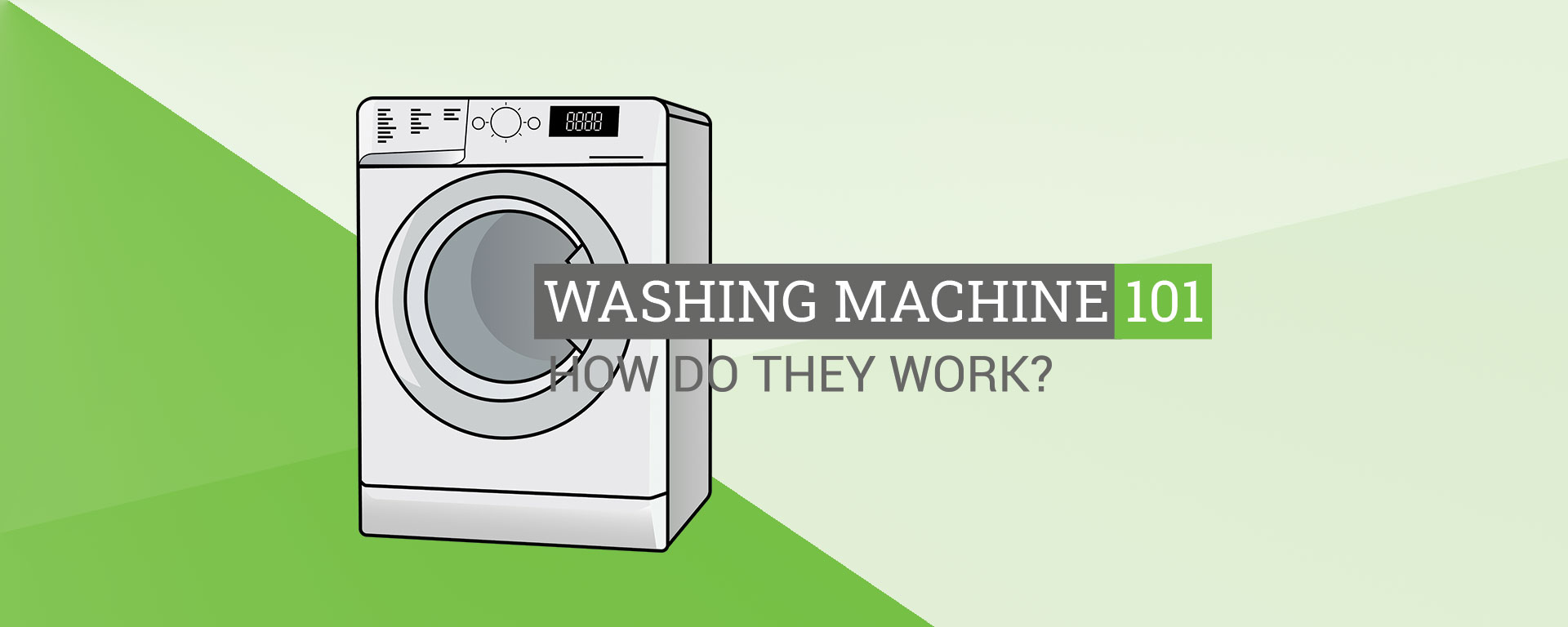Washing machines are a godsend during laundry days. Not only does it save you from a trip to the laundromat, but it will also save you from the hassle of handwashing, which translates to more time and energy for the things you actually want to do. This begs the question: how does a washing machine work anyway?
A washing machine works by passing water and soap through your clothes to loosen dirt and grime, with the drum walls acting as the washboard. Understanding how washing machines work will be helpful when choosing the best model for you – it can help you get the most of your unit. Here is a concise rundown on the different configurations of washing machines, its parts, and the wash cycle.
Semi-automatic vs. fully automatic washing machine
Washing machines can be divided into two categories: fully automatic and semi-automatic.
Apart from putting the clothes in to the tub, fully automatic washing machines do most of the work for you. Your machine will put water and detergent, and even dry your clothes after the cycle.
This cycle is controlled by its programmer – the electronics that tells each part what to do and for how long to do it.
Fully automatic washing machines can also be further subdivided into either top loading or front loading configurations which we will get into in a while.
Semi-automatic washing machines (more commonly known as twin tub in the Philippine market) have two tubs side-by-side – one for washing, the other for drying.
For this type of washing machine, you have to put the water and detergent yourself. After washing, you also have to transfer the wet clothes to the dryer tub. While you do have a lot more work to do manually, it is definitely cheaper to buy and operate than its fully automatic counterpart.
There are also single tub washing machines and separate spin dryers available in the Philippine market. But since these, along with semi-automatic washing machines are pretty much straight forward to use, we will use fully automatics as the basis for this article.
How washing machines work
To clean your laundry, a washing machine does these two things: (1) passing water and detergent through your clothes to loosen dirt and grime, (2) scrubs your clothes through friction from other clothes, with the drum walls acting as the washboard.
A washing machine uses different parts to achieve this, but before going into the main parts of the washing machine, we should look into the two configurations available in the market.
Top loading vs. front loading washing machine
The way a washing machine works will be based upon its configuration. The configuration refers to how the washing machine’s tub is positioned, which can either be vertically (top loading) or horizontally (front loading).
Wash Motions
Top Loaders open at the top. If you peer inside the door, you will see either a circular disk (pulsator/impeller) or a tall pillar (agitator) at the middle. This part forces the water and clothes at in the tub to go in a circular motion. However, the friction from the clothes rubbing together and from the agitator itself can be damaging to clothes in the long run.
Front loaders open at the front. Peering inside, you won’t see any agitators or pulsators at the middle of the drum. To move your clothes, the drum itself spins. With the aid of gravity, the force of the rotation moves the clothes through the water and detergent. Aside from only needing a smaller amount of water compared to a top loader, the lack of an agitator makes front loaders more gentle on clothes.
Both top loaders and front loaders have their own pros and cons. Check out which type is right for you in our Washing Machine Buying Guide.
Main parts of the washing machine
Washing machines are conceptually simple machines, but it has many parts that work together to achieve its goal.
The parts may vary from for top-loaders and front-loaders, but the core parts are more or less the same.
Water inlet
This is the part the lets the water in to the tub. The amount of water it lets in can be dictated by you or it can also be determined by the programmer.
The programmer is sensitive to water pressure. That is, if it detects a low water pressure, it automatically issues an error code, rendering you unable to use your machine.
Before purchasing a fully automatic washing machine, make sure that the water pressure in your area is adequate.
Inner drum
This is where you put in your clothes for washing. For top-loaders, this drum spins during spin drying. Meanwhile for front-loaders, this tub spins during the wash cycle to tumble your clothes.
You may have noticed holes along the walls of the drum. The holes serve two purposes: (1) they let water in from the static outer drum (and yes, there are two drums) and (2) this is where the water is expelled during spin drying.
Agitator/Pulsator (or Paddles)
Top-loading washing machines use either an agitator or pulsator to spin your clothes in the tub.
An agitator is the large spinning central pillar that basically catches clothes and spins them around the tub. Meanwhile a pulsator (also called an impeller) is a spinning disk with grooves and humps that create currents and turbulence in the water that spins clothes and cleans them
A front-loading washing machine has a different set up. Since their inner tubs are the ones that are spinning, the drums are equipped with paddles that help move and tumble the clothes in the drums.
Outer drum
The outer drum holds in the water while the inner tube (or the pulsator) spins.
During spin drying, the water that is wrung is caught by the outer drum, which then drains away to the drain hose.
What happens during the wash cycle
For top-loaders:
For top-loaders, the wash cycle goes like so:
- You load the washing machine with laundry and detergent. The programmer calculates how much water and time is needed for this batch.
- The water inlet lets the exact amount of water that is needed in to the tub. This may take a while depending on the water pressure.
- The pulsator spins in bursts – alternating from clockwise and counter-clockwise. Mixing the clothes, water, and detergent all together to remove the dirt.
- The dirty water drains out of the drum.
- To rinse your clothes, the water inlet lets in another batch of clean water as the drum rotates slowly.
- The spin drying process begins. The inner tub spins at a high-speed – effectively wringing out your clothes from excess water.
- The water is caught by the outer tub, to be led out by the drain hose. The wash cycle is finished!
For front-loaders
For front-loaders, the wash cycle goes like so:
Note: Since the door is located at the front, it needs to be closed when you fill it with water. Hence, you can’t add forgotten bits of laundry when the cycle starts.
- You load the washing machine with laundry and detergent. The programmer calculates how much water and time is needed for this batch.
- The water inlet lets the exact amount of water that is needed in to the tub. This may take a while depending on the water pressure.
- The inner drum spins – mixing the clothes, water, and detergent all together. The paddles also help in tumbling the clothes.
- The dirty water drains out of the drum.
- To rinse your clothes, the water inlet lets in another batch of clean water as the drum rotates slowly.
- The spin drying process begins. The inner tub spins at a high-speed – effectively wringing out your clothes from excess water.
- If your front-load unit is washer only, then the washing cycle is done! You may now transfer it to your dryer or hang it to air dry. If your unit has a built-in dryer, the heating element will start drying off your clothes. This will take about 30-45 minutes.
Conclusion
While most people can go about their lives not knowing how washing machines work, knowing so will provide you with information to make better decisions when buying a new washing machine. It can also help you improve its performance to get more from it – or at the very least, not break it.
References:
https://www.brighthubengineering.com/consumer-appliances-electronics/38895-working-parts-of-a-washing-machine/
https://www.ariel.in/en-in/washing-machine-101/your-guide-to-washing-machines/anatomy-and-parts-explained

Miguel Mores worked for 5 years as a member of the product management team for a home appliance company in the Philippines. He started 101appliance to answer the most common customer questions that he has encountered during his time in the industry. He now works in the digital marketing field and manages a small online bookstore on the side.

